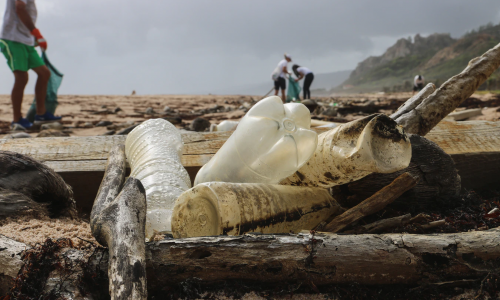Getting to grips with Travel Planning
Animal healthcare, like human healthcare, comes with a significant environmental impact, and many in the veterinary sector are already working with Investors in the Environment to benchmark measurable progress towards sustainability in their practices.
April Sotomayor, Investors in the Environment
Drafting an effective travel policy, and setting up a plan to make it work well within your organisation, can be a challenging first task. Before Covid-19, many organisations didn’t think sustainable travel was something they could significantly influence. With growing awareness around the environmental impacts of transport – such as air pollution and carbon emissions – people are wondering how they can go about this challenging task whilst also meeting business-critical needs and following the social distancing advice recommended by national health advice.
The purpose of a travel plan
A travel plan is developed to help you manage transport for your practice and also encourage staff to make informed and more sustainable choices for their travel arrangements. By understanding staff needs and limitations, you can introduce guidance, support and incentives that makes the process of change easier for staff or those making travel decisions – from booking transport arrangements to investing in your fleet or infrastructure.
Your travel plan should not be a tick-box exercise. It should be a tool for supporting continual improvement against the negative environmental, social, and financial impacts of travel as a result of your practice’s needs. Determine what your high-level objectives for sustainable transport are, such as reducing your carbon footprint, improving the health and well-being of your staff, or simply managing your travel requirements in a more consistent and efficient manner.
Your travel plan should support:
- Business essential travel – It is about understanding what essential travel is necessary and prioritising how staff will travel.
- Staff commuting – Staff commuting needs, and how you can support them on sustainable transport options, may be a vital way you can reduce indirect carbon emissions and show stakeholders your support for reduced travel or more sustainable ways of getting around.
- Customer travel – Thinking about how your customers travel to see you and how you accommodate their sustainable transport choices.
- Travel procurement – Those purchasing any arrangements related to travel should know how their decision influences your environmental impact, including hotels and their location from venues, public transport, or other services. Those making decisions on changes to your fleet or facilities should also understand how the travel plan or policy supports their sustainable choices.
Who needs to know about the travel plan and who should be involved?
This should be clearly outlined in the scope of your travel plan. Your travel policy should include everyone to whom the plan will apply, including staff, customers, or other site users.
Bring together your green group and discuss what the travel needs of the business are. What essential travel is needed? What do staff want and what are the existing barriers to more sustainable travel? We recommend carrying out a travel survey for all teams as a good starting point for engagement on sustainable travel.
What should my travel plan include?
If your organisation owns any fleet vehicles, you should be looking at how to make them more sustainable. These should be managed in alignment with your Environmental Management System. Your plan should include:
- Any vehicles under direct management control (company cars, fleet, or other vehicles). Any staff using these resources should have some policy guidance and basic training on general usage, vehicle maintenance, and fuel-efficient driving.
- Guidance for staff using their own vehicles for business travel. There should be advice or incentives to support reduced mileage and fuel efficiency. There should also be use of a travel hierarchy, encouraging staff to ask themselves questions such as: does the meeting need to take place face to face? Is it close enough to walk or cycle to? Can they take public transport? If they have to use a car, can they attend other meetings in the area to maximise efficiency?
- Consider including a section within your document on rota planning, to help to reduce unnecessary journeys and improve staff wellbeing. By planning for some staff to be clinic-based on certain days, it could potentially enable them to walk/cycle or use public transport. You could provide use of a pool electric car for the vet on call-outs.
- Training provision: outline your company expectations for how staff will manage their business travel within their role. Include any available guidance such as online training.
- Identify what transport infrastructure or shared resources you provide as a business. This may include cycle storage, car sharing bays, EV charge points, and pool cars – you may even include tyre pumps or other safety and fuel efficiency equipment available for staff use.
Your travel policy should clearly link to any sustainable transport target or objective you may have identified in your environmental or sustainability policy, such as fuel consumption or carbon reduction targets. Overall, the travel plan will be a document that evolves over time, like your environmental policy, and you will be working towards making improvements to its structure and content each year.
April Sotomayor
BSc Biology, MSc Environmental Management, PIEMA
Sustainability Consultant and National Responsible Resource Use Lead at
Investors in the Environment
Thinking of updating or creating a travel plan for your organisation?
Maybe you're a travel planning expert or perhaps all of this is new to you. Whatever your level of experience — we'd love to hear your success stories, travel concerns and top tips.



